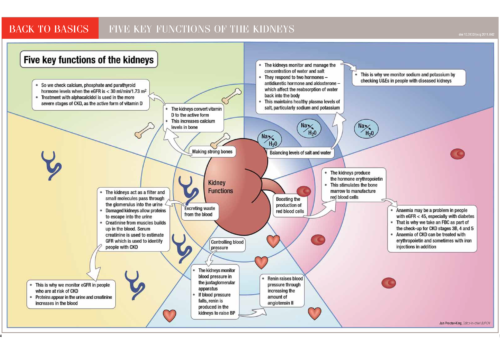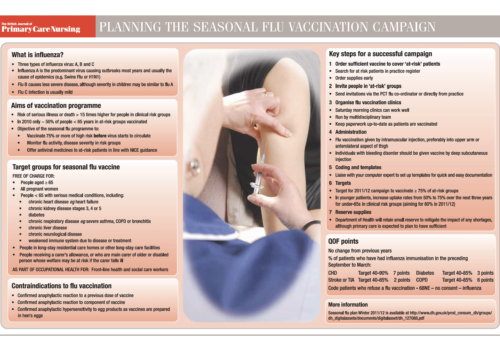It’s good to talk. Communicating effectively with our patients and their families is a key part of our jobs as primary care nurses and we have a major new communication job on our hands over the next few months. The new guideline from the National Institute for Health and Clinical Excellence makes ambulatory monitoring part of routine practice for diagnosing high blood pressure (BP), so we are going to need to explain to patients why we are sending them home with monitors rather than just taking BP readings in the practice.
Nine processes of care for diabetes
The National Institute for Health and Clinical Excellence (NICE) recommends that all people with diabetes should receive nine key tests at their annual diabetes review. These important markers ensure diabetes is well controlled and are designed to prevent longterm complications. The nine key tests are: weight, blood pressure, smoking status, HbA1c, urinary albumin, serum creatinine, cholesterol, eye examinations and foot examinations. This review discusses the importance of each marker of improved long-term care of patients.
Putting the NICE guideline on ambulatory blood pressure monitoring into practice
Heart failure: managing breathlessness and oedema
Heart failure is characterised by fatigue, breathlessness and retention of fluid. The update of the National Institute for Health and Clinical Excellence chronic heart failure guidelines has simplified its management by using a stepped approach to investigation and treatment. In this article, we focus on the practical aspects of managing the two main symptoms associated with heart failure – oedema and breathlessness.
One in five strokes warn you they are coming: treat transient ischaemic attacks as emergencies
Transient ischaemic attack (TIA) is a powerful warning sign of an impending, and potentially disabling, stroke. It is important to understand differences between stroke and TIA, how the FAST test can help you recognise the signs, and the use of the ABCD2 score to assess the level of stroke risk. Treating TIAs as emergencies is critically important in preventing a full stroke so urgent referral to your local TIA service is best practice.
Supporting people with communication problems after stroke
Communication problems are one of the most common after-effects of stroke, affecting about one in three people. Losing the ability to speak or understand language – aphasia – is frightening and frustrating. This article offers insights and practical tips to aid communication.
Back to Basics: The five key functions of the kidneys
BATMAN’s mission: reduce the impact of stroke
In this new series, BJPCN interviews key people leading major initiatives in the prevention and treatment of CVD and diabetes. Alastair Bailey, who leads the Brain Attack Team (BAT) at Leeds Teaching Hospitals Trust explains how the team ensures that patients with stroke receive prompt thrombolytic treatment to improve outcomes.
Back to Basics: Planning the seasonal flu vaccination campaign
The big hitters for quitters
The impact of smoking on all aspects of health – physical, psychological and socioeconomic – is so serious that helping people to quit is a key priority for anyone working to improve health outcomes. In this article, we look at the best way to encourage smokers to quit, how to increase the quit rate in smokers who have decided that the time is right for them to stop, and review the latest information on pharmacological options for smoking cessation.
Raising the issue with patients: let’s talk about sex
The quality of many of our patients’ lives would improve if they had the choice and ability to be sexually intimate. It is relatively common for men who suffer from cardiovascular disease or diabetes to suffer from erectile dysfunction (ED). They often feel too ashamed to initiate sex with their partner, or start a new relationship, because they are unable to gain or maintain an erection. They can become socially isolated and aviod physical contact. As healthcare professionals, we owe this group of patients an opportunity to talk about their sexual problems and to offer them support and treatments. But how do we open up a discussion about sex?
Motivating women and men: what presses the right buttons?
Getting people to act on advice is a continuing challenge for health professionals, particularly in the self-management of chronic conditions. In this article, we explore why men are less likely than women to fully engage with their own health needs and what health professionals can do to help men get better at this. Using the behavioural theory of communication – the Theory of Primitive Concerns – we will look at how different responses to risk – with women typically being risk-averse and men being risk-seeking – mean they respond differently to two alternative styles of clinical instruction based on using ‘power language’ and ‘safety language’. The theory is that we can help men to look after their own health by using language that matches their attitude to risk and presents self-care in a more powerful way.























